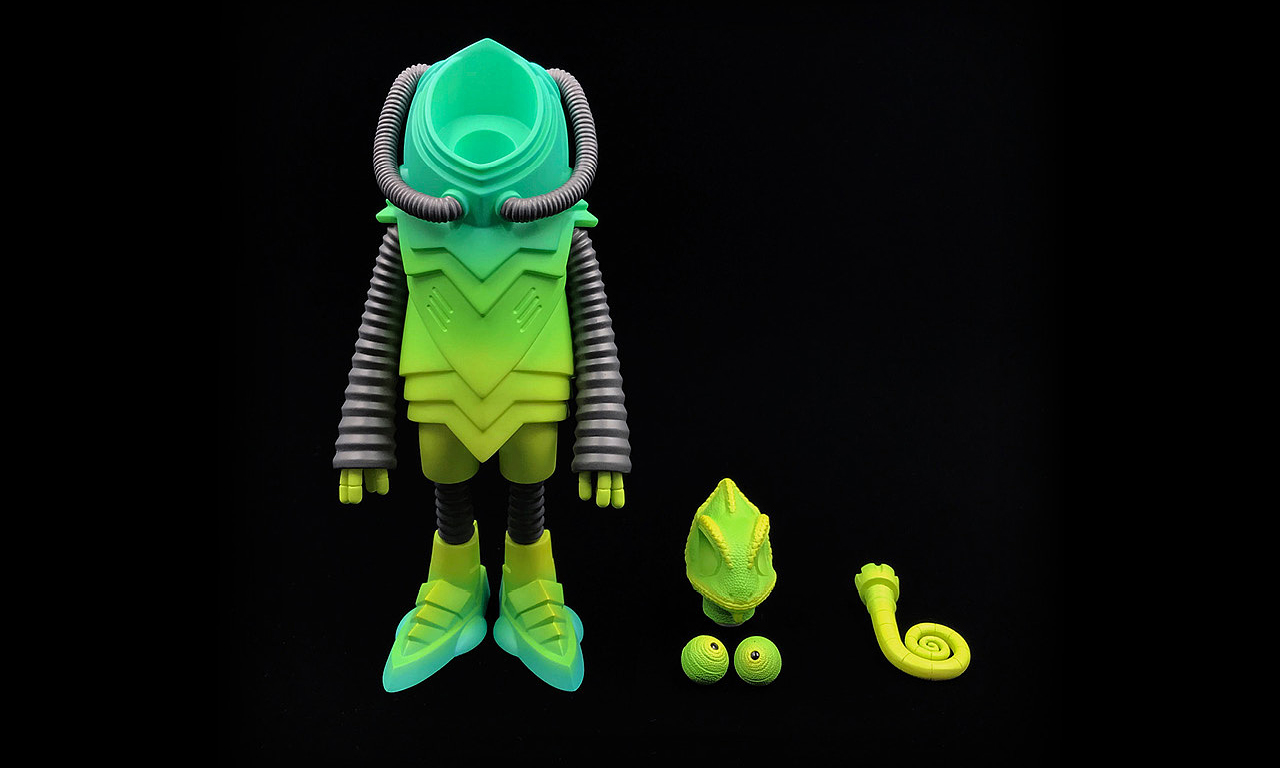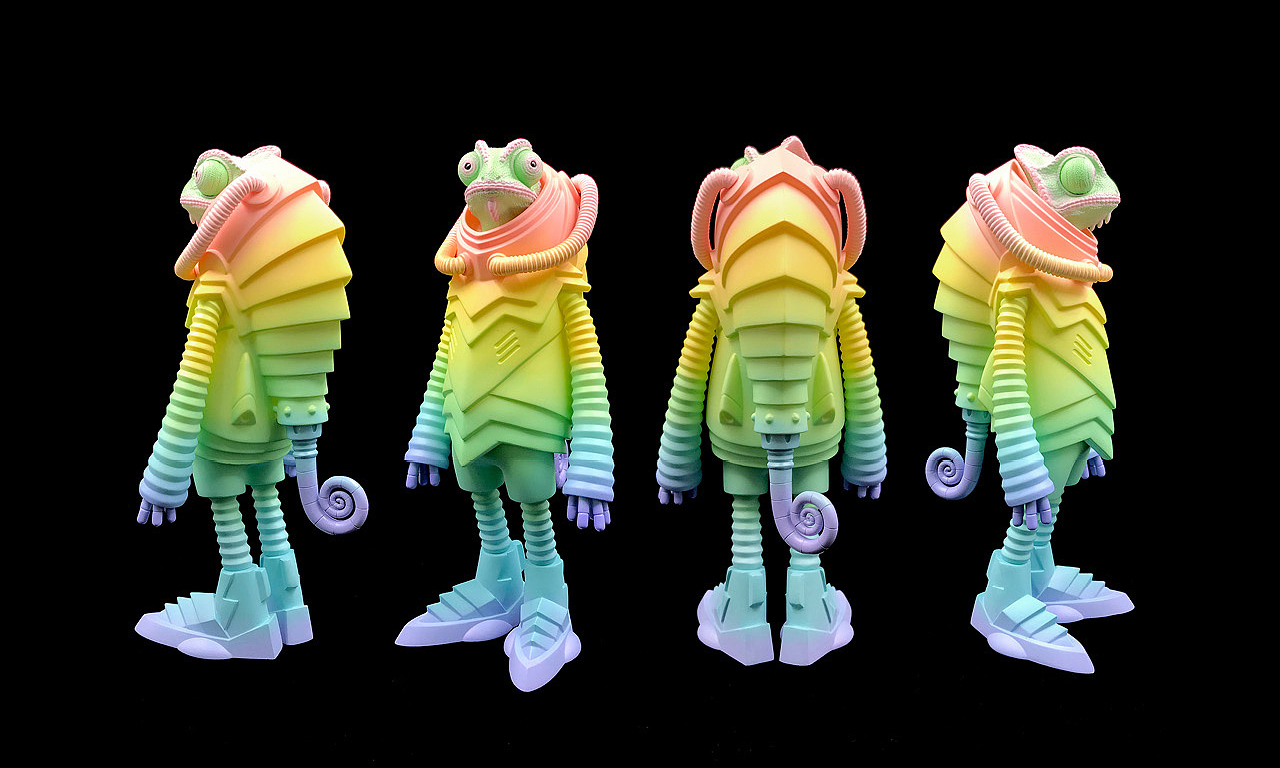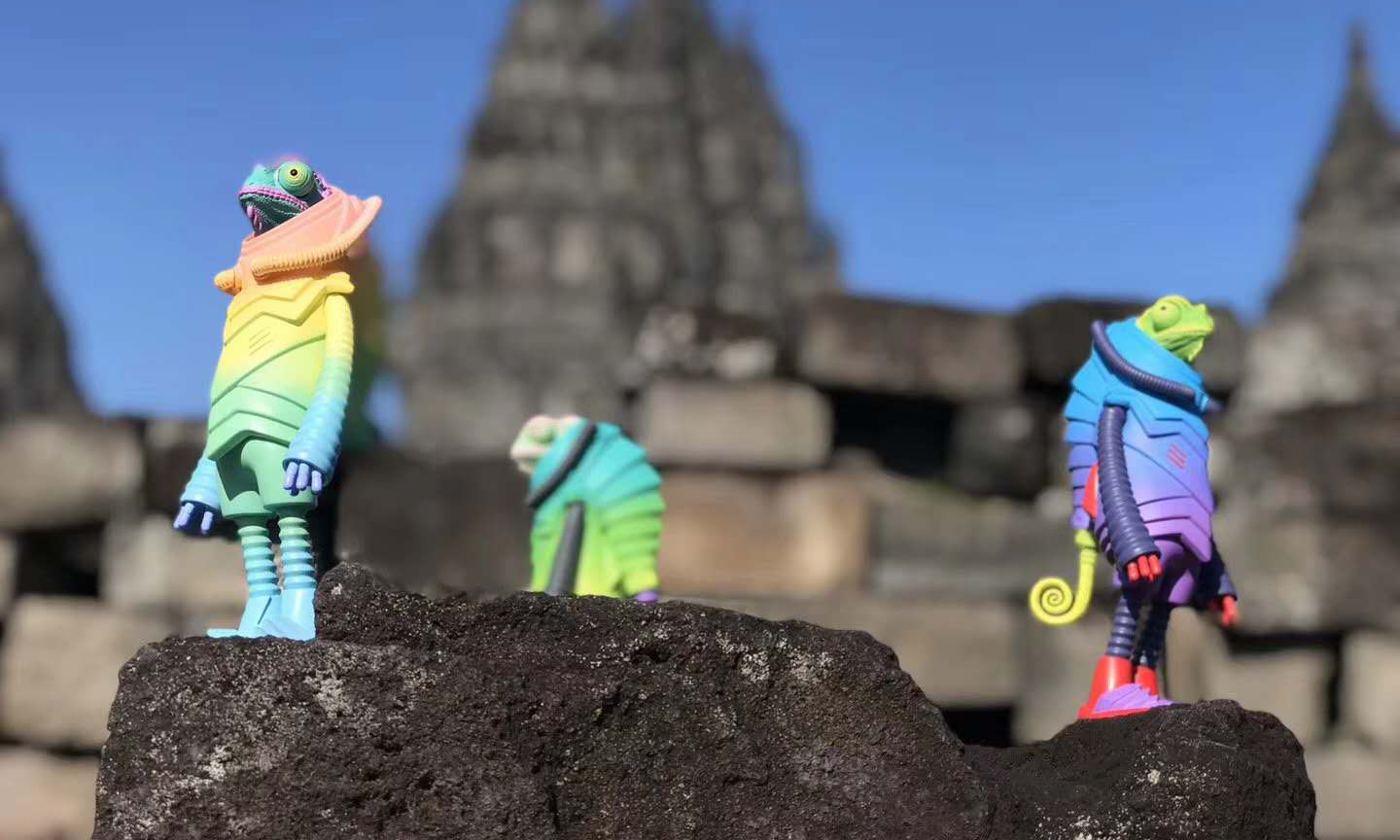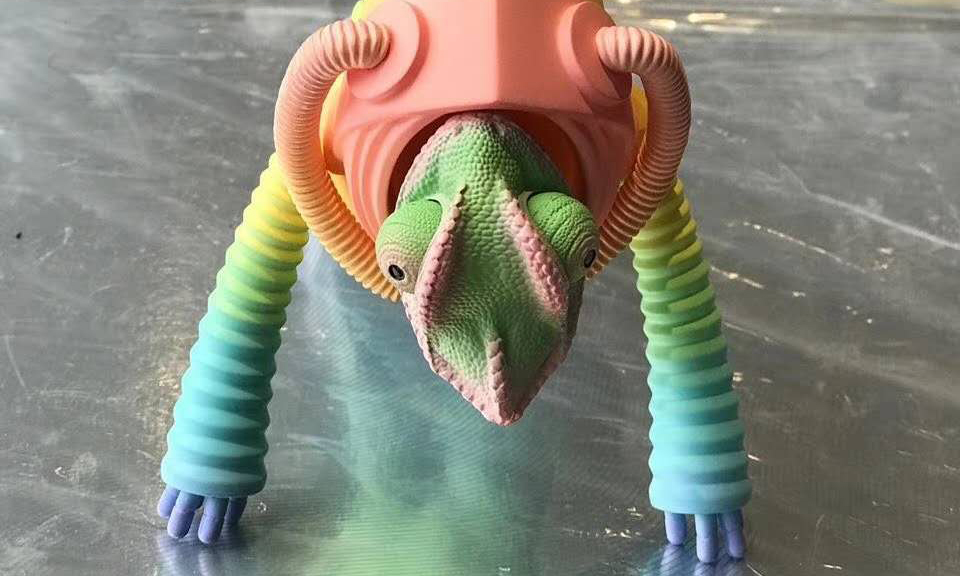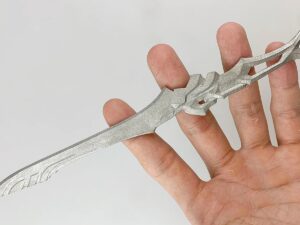- FDM 3D Printed Robotic Arm Model
- Peak’s First Fully SLS 3D Printed Sneaker Model with Fullcolor Nylon
Gallery
About Project
They came from outer space, but they blend in so well you would never know! Spacemen chameleons, literally! The striking figure puts a different spin on the space craze within the art toy world with a cosmic chameleon. B1 Spacer is ready to explore the unknown in a streamlined, geometric space suit inspired by leaves and custom-tailored for chameleon anatomy.
Currently available in three different colorways, B1 Spacer has the sculpted head of a chameleon, with the body taking on the form of the spacesuit but also has a leaf-like look. These B1 Spacer models stand at 8 inches tall and are mainly made from vinyl and PU. Urethane casting is the most suitable method for making prototypes for this kind of exquisite art toys, but the very first step is to 3D print an original mold.
We first built the 3D models of different parts of the chameleon. Then 3D printed all of the parts as the master pattern with the help of SLA 3D printing technology. Its head, feet and tail are replicated by urethane casting, which injects the silica gel and epoxy resin into the mold, and the two liquid materials chemically react and form into a solid shape. The urethane casted parts usually require more post-processing effort.
Rotational molding is a nice method of forming hollowed arms and body of the chameleon. Vinyl powders differ in that the mass of material first distributes over the entire inner mold surface. As the mold is heated, it forms a skin and gradually melts to form a uniform layer of plastic.
Solution
- Step 1: Our engineer communicated with the designer and recommended the most suitable manufacture plan for 500 pieces of the chameleon design toy.
- Step 2: Decomposite the 3D model and print them with the SLA 3D printing technology, using SLA Generic Resin.
- Step 3: The SLA 3D printed parts serve as the master patterns, which is used to create an A side and a B side and form a void for the mold.
- Step 4: Inject silica gel and epoxy resin into the box and enwrap the master pattern. The silicone mold is finished after the mixed material hardens.
- Step 5: Split the silicone mold into A and B sides, then take out the master pattern. Urethane cast the heads, feet, and tails from the silicone mold with PU.
- Step 6: Examine and amend all the casted parts by hand before sanding and polishing. It’s a step that cannot be skipped in urethane casting.
- Step 7: Build the wax mold of the chameleon’s arms and body by pouring wax into the silicone mold.
- Step 8: Take out the wax mold. Form the copper mold by electroplating the wax mold.
- Step 9: Rotational casting the arms and bodies using the copper mold with vinyl.
- Step 10: Electroplate several more copper mold from the vinyl parts.
- Step 11: Examine, sanding, and coloring the vinyl parts which are molded from the copper molds.
- Step 12: Assemble all the parts together.


